Ljubljana related
STA, 6 October 2019 - Retired Celje Bishop Stanislav Lipovšek stressed at the annual Teharje ceremony remembering an estimated 5,000 victims of war and post-war summary executions the need "for true reconciliation with the past" if Slovenia wants to build a safe and happy future.
Addressing the ceremony in the Teharje Memorial Park (Spominski park Teharje) near Celje on Sunday, Lipovšek said 74 years were passing this year since the end of World War 2, 50 of which passed in forced silence and an guided concealing of the truth about events during and following the war.
While speaking of 600 execution sites around the country as proof of that, Lipovšek expressed gratitude to all who made sure that these sites are finally being tended to and that Slovenia is approaching the basic civilisational norm of giving the dead the right to a name and a grave and the living the right to remember.
Mass Graves in Slovenia: An interactive map
"For a lasting an true peace and a future of our nation, a reconciliation of with the past is vital, since we cannot build a safe and happy present time and future without making sure true reconciliation with the past occurs.
"Reconciliation is only possible if we're willing to forgive. And forgiveness is only possible when we're ready to admit the truth, no matter how painful, difficult and burdensome it may be. Only the truth sets you free," Lipovšek said.
The ceremony was also addressed by researcher Slavko Žižek, who said "no nation can survive with a burden that began with the murder of several hundred victims in the autumn of 1941 and spring of 1942 and ended with the executions of thousands at the end of the war".
He rejected the continuing accusations of treason, collaboration etc, saying that the "only sin of these people was to resist the terror of the red star".
Many had to leave Slovenia because of their "love of God, of the nation, homeland and life" and they managed to preserve the Slovenian language and love of the homeland and transfer them to their offspring, which "simply does not square with the definition of treason", he said.
Among the victims the Teharje Memorial Park pays respects to were members of the Home Guard, a militia that collaborated with the Nazis; soldiers; civilians; and refugees from Croatia and Serbia apprehended by the Allies in May 1945 in the northern Koroško region as they were fleeing north.
Book: Post-War Massacres in Slovenia
The Allies turned them over to the Partisans, who brought them to the Teharje barracks, a facility formerly used by the Nazi Germany military.
In the subsequent two months, some 5,000 people were killed without a trial on several locations nearby Teharje, including the notorious Huda Jama mine shaft near Laško.
It took a long time until the locals dared to speak about what had happened. Many mustered the courage to speak up only after Slovenia gained independence in the early 1990s.
A memorial park was inaugurated at the site of the former barracks in 2004 but it still not fully finished.
In 1869 the Vienna Postal Administration, which was at the time in charge of the mail in Slovenia, then part of the Austro-Hungarian Empire, introduced postcards to carry shorter messages that were cheaper than letters and did not need an envelope.
In the second half of the 19th century, lower paper costs allowed for a novelty to be introduced into the postal service – envelopes. Letters were now inserted into unscripted paper wrappings, which were industrially produced and stamped in Austria first.
On today's date in 1869 the Vienna Postal Services introduced the first official postcard in the world, which was called “Correspondenz-Karte”. In Slovenian it was first called “listnica” and was later renamed to “dopisnica”.
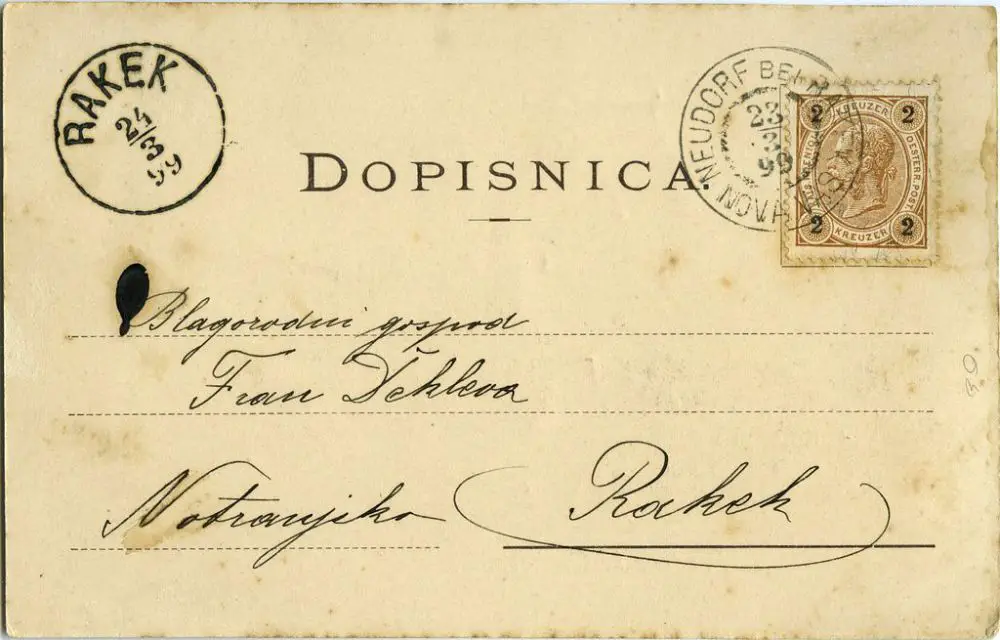
STA, 1 October 2019 - After almost 60 years since its establishment, Adria Airways, Slovenia's flag carrier privatised in 2016, is grounded. By selling it to German fund 4K Invest, the state claimed it wanted to give the troubled company a fresh impetus, but with the management filing for receivership, the opposite scenario has happened.
March 1961 - Charter airline Adria Aviopromet is set up, operating DC 6 planes. In December of the same year, it operates the first flight with a home crew.
1964 - Adria Aviopromet gets its own airport in Brnik, after landing and taking off at Croatia's Zagreb airport.
1968 - Adria Aviopromet introduces the first regular route, between Ljubljana and Yugoslavia's capital Belgrade, and is renamed Inex Adria Aviopromet.
December 1981 - An Inex Adria Aviopromet plane crashes into Mt San Pietro in Corsica. All 180 people on board die.
1986 - The company is renamed Adria Airways. In the years to come, the number of routes grows, and so does the number of passengers.
25 June 1991 - Slovenia declares independence, and Yugoslavia's civil aviation administration soon bans Adria Airways from flying for three months.
1992 - Adria Airways relaunches its business and focusses on regular routes rather than charter flights.
1995 - The company enters a code share agreement with Germany's Lufthansa.
2004 - Adria Airways becomes a member of Star Alliance, the world's largest global airline alliance.
2010 - The airline establishes Adria Airways Tehnika, a subsidiary for the maintenance of its fleet.
2011 - Due to financial trouble, Adria Airways sells its 100% stake in Adria Airways Tehnika to two state-owned companies and is recapitalised by the state with EUR 50 million.
2012 - An international call to sell a 74.87% stake in Adria Airways is published, but falls through. The European Commission launches a probe into state aid.
2014 - The European Commission establishes that four state capital injections Adria Airways received in 2007-2011 were not in breach of EU rules.
July 2015 - A call to sell a 91.58% stake in Adria Airways is published, with an almost 70% stake held directly by the state and the rest indirectly through state assets managers.
January 2016 - A contract to sell the 91.58% stake to the German turnaround fund 4K Invest is signed. Before selling it, the state recapitalises the company with EUR 3.1 million and receives purchase money to the tune of EUR 100,000.
March 2016 - The privatisation is completed. CEO Mark Anžur hands over to Arno Schuster as the last Slovenian manager at its helm.
July 2017 - Through a subsidiary, Adria Airways takes over Swiss regional airline Darwin Airline, which in November files for bankruptcy. Swiss prosecutors then open a probe into financial irregularities.
February 2018 - Schuster resigns as CEO, and is replaced by Holger Kowarsch.
summer 2018 - Due to a shortage of staff, Adria Airways starts merging flights. Its fleet grows to 21 planes, the highest number ever.
December 2018 - Despite a capital injection of EUR 4 million from Adria Airways owners, the Civil Aviation Agency threatens to revoke its operating licence.
January 2019 - The Civil Aviation Agency finds the airline is solvent in the long-run.
February 2019 - STBE, a company said to be the owner of Adria Airways brand, is folded into Adria Airways to increase its capital.
June 2019 - Adria Airways is cancelling ever more flights.
September 2019 - Pilots threaten to go on a strike, but the two sides manage to sign a new collective bargaining agreement.
10 September - Adria Airways delivers to the Civil Aviation Agency an audited financial report for 2018. Nine days later, the agency bans it from flying with two CRJ900 Bombardier planes.
24 September - Adria Airways stops flying to all destinations expect once a day to Frankfurt and back to Ljubljana.
25 September - Adria Airways is given until 2 October to provide a financial restructuring plan, or else it would lose its operating licence.
30 September - As the government discusses Adria Airways' financial situation, Economy Minister Zdravko Počivalšek says receivership seems to be the most viable option. The management files for receivership as it cancels the remaining flights, and the airline loses its operating licence. Počivalšek indicates the state could set up a new air carrier.
All our stories on Adria are here
August 20, 2019
In 1910 the official opening of a new, beautiful and large hotel took place in Portorož. At the time Palace Hotel (hotel Palace, but since 2008 known as Kempinski Palace Portorož), was one of the most prestigious and beautiful hotels on the Adriatic Coast, second only to the Excelsior Hotel in Venice.
The hotel, an example of neo-classicist architecture under the influence of the Viennese secession and Italian construction, was designed by the Vienna-based architect Johann Eustacchio from Friuli, and built by the Bruna & Depaoli construction company from Trieste.
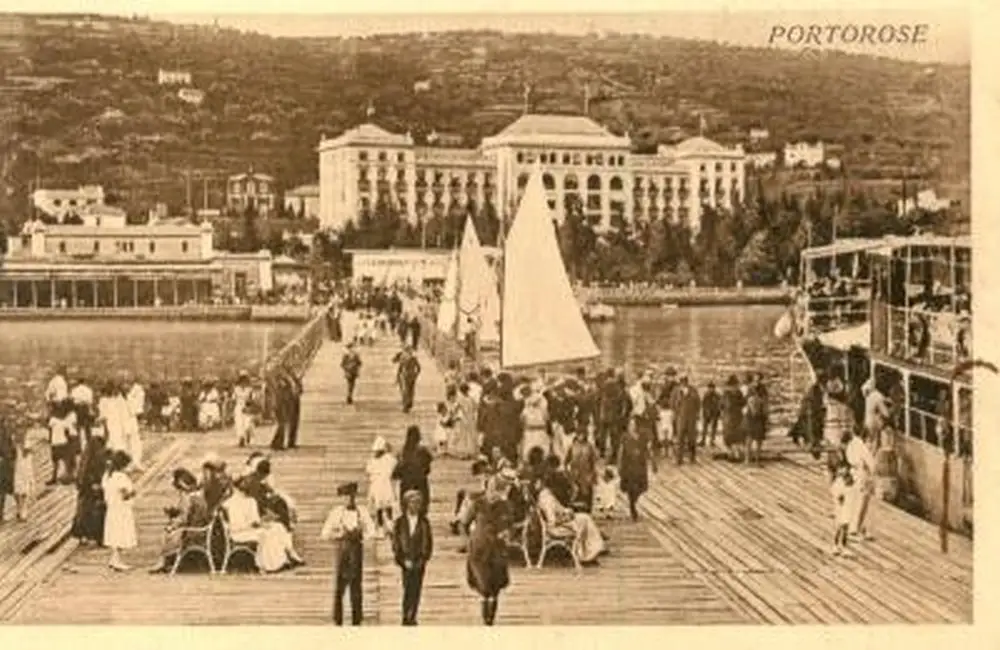
During the WWII tourism ended in Portorož, and the hotel was plundered and used by various armies. Renovation works began in 1949, and in 1951 hotel was reopened.
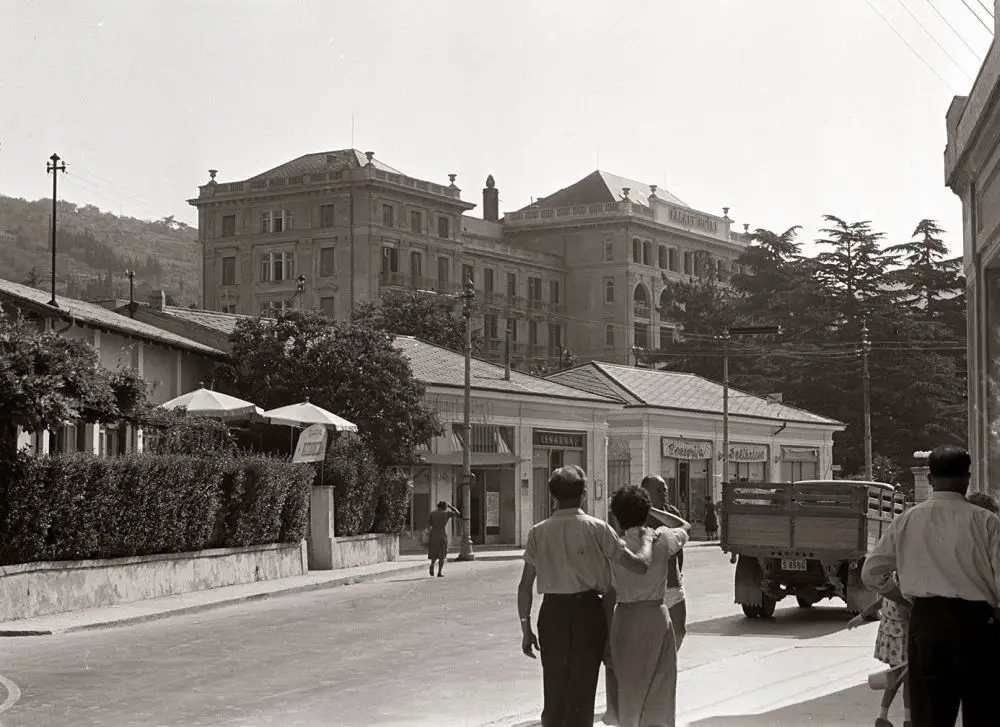
During the 1960s it hosted many internationally recognised names, including Josip Broz Tito, Orson Welles, Sophia Loren, Yul Brynner, Marcello Mastroianni, Rita Pavone, Bobby Fisher, and so on.
During the 1970s and 80s a new Portorož began to form under the supervision of architect Edo Mihevc. Times were not favourable for the decorative style of the Palace Hotel, which also lost its direct access to the sea. The number of guests started to decline, and the hotel was finally closed in 1990.
After the hotel became the property of the Municipality of Piran, renovation and demolition works began in 2005 in cooperation with the strategic partner, Istrabenz. All that was left of the old hotel was its front façade facing the sea, Crystal Hall and its salons, and the main historic stairway. Everything else was rebuilt.
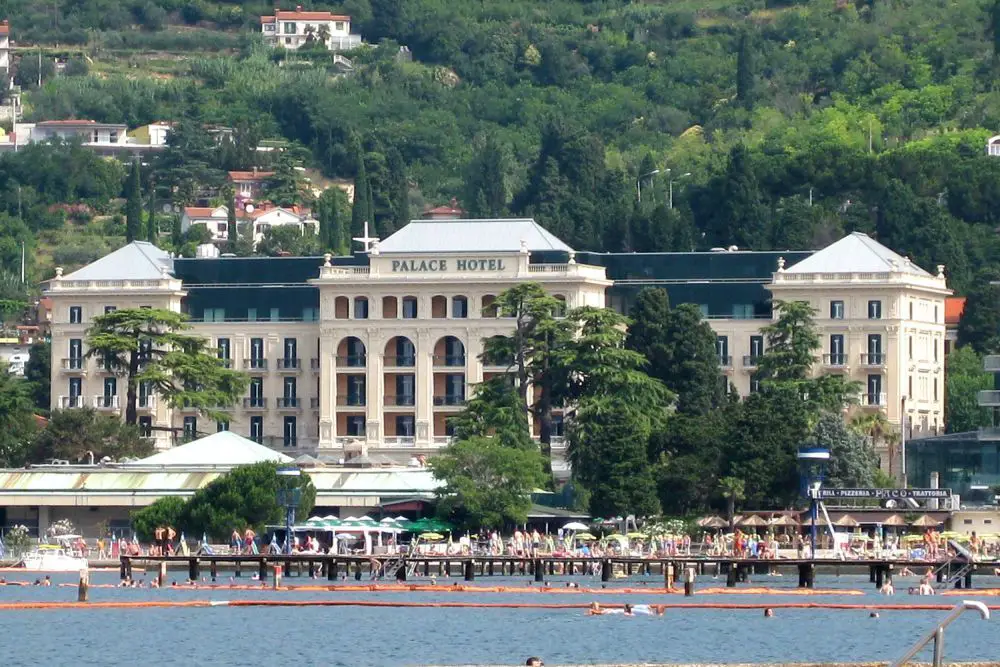
Related: Postcards From Sunny Portorož
August 19, 2019
In 1934 a balloon with two Belgian stratospheric pilots, professor Max Cosyns and his assistant Nere van Elst landed in the little Slovenian village of Želivlje.
The pilots took off at 6:00am from Hour-Havenne airport in Belgium and reached the altitude of 16,000 metres several hours later. On their descent strong winds carried them across Austria until after a 14-hour flight they finally landed in Ženavlje. Their flight was reported live to various radio stations and media outlets across Europe and the USA from the radio connection in the balloon’s gondola.
Some of the older citizens of the remote region of Goričko had seen a balloon 40 years before, so they knew what it was and helped with the landing. The event became quite a sensation, with about 6,000 people were attracted to the site, among them many reporters.
For a few days the Mura river region became the centre of international media attention and the domestic and foreign press for the first time described an area that had until then been ignored. A journalist from Ljubljana wrote for Jutro newspaper: “This is not Siberia, it is a land of kind local people, whom the pilots will remember for a long time to come.”
After some rest, Cosyns and van Elst headed towards Ljubljana, and from Ljubljana they took a plane to Zagreb, where they received king Alexander’s medal of honour, the newest map of the Slovenian lands and Doctor Slavič’s 1919 book Prekmurje.
August 18 became an important day in the history of Goričko, and in 1997 a memorial with a bronze statue, the work of Mirko Bratuša, has been placed in the spot of the balloon’s landing.
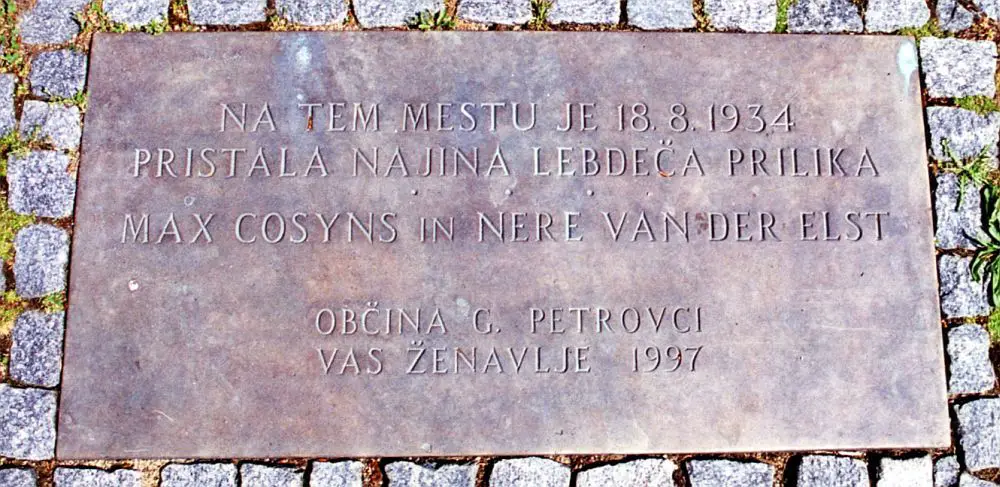
STA, 14 August 2019 - Slovenia is observing 100 years since its northeastern-most region of Prekmurje was united with the rest of the nation after World War I and the collapse of the Austro-Hungarian Empire. Located east of the river Mura, Prekmurje was the only territory the Slovenian nation gained at the 1919 Paris Peace Conference.
For nearly a thousand years, Prekmurje was a part of the Kingdom of Hungary, while the remaining Slovenian lands were under Austrian rule.
When the Hapsburg family, the rulers of Austria, took over Hungary in the 16th century, Prekmurje still remained under the Hungarian part of the monarchy, separate from the rest of what is now Slovenia, the Mura etching out a sharp border between the lands up until after World War I.
The peace conference that followed World War I decided that Prekmurje become a part of the then Kingdom of Serbs, Croats and Slovenes on 17 August 1919.
Five days before the date, the royal military occupied the region, handing over the region to the kingdom's civil authorities on the date agreed at the peace talks.
The border between Hungary and the Kingdom of Serbs, Croats and Slovenes was drawn along a demarcation line proposed by Douglas W. Johnson, a cartographer teaching at Columbia University who was a member of the US delegation at the Paris Peace Conference.
He proposed that the border line run north of the Mura, based on statistics provided by Matija Slavič, a member of the Yugoslavian delegation at the conference.
The break-away of Prekmurje from Hungary would not have been possible without a strong national awareness of the people of Prekmurje and the region's well-nourished dialect, according to linguist Klaudija Sedlar, specialising in the region's cultural and historic heritage.
This national fight was also fought along religious lines, with Catholic priests playing a key role against aggressive assimilation launched by Hungary with the help of the Protestant Church in an attempt to preserve its western-most region.
Among other things, catholic priests from the region of Prlekija, just across the Mura, smuggled Slovenian books in barrels across the river in the 19th century, getting some 20,000 books to people living in very modest conditions but nurturing an impressive reading culture.
The Trianon Peace Treaty, which saw Hungary lose two thirds of its territory, also left a part of the Slovenian population in Hungary. A century later, the community living along the Raba river is in no mood to celebrate.
Although recognised as a national minority by Hungary, the community was cut off from its nation and forgotten by Hungary, Andrea Kovacs, the president of the Association of Slovenians in Hungary, has told the STA.
Overnight, the community found itself in a completely different situation, losing writers, teachers, priests, professors and clerks, as Hungarian clerks, teachers and other state staff were sent to the villages along the Raba, launching assimilation that continues today, she said.
"Although they were left to their own devices, our forefathers were very stubborn and this stubbornness helped that we still live in Monošter [Szentgotthard] and seven surrounding villages today," she said.
On the other hand, there was also a Hungarian community left on the Slovenian side of the border, which has consistently refused to celebrate Prekmurje Reunification Day.
This year, however, the minority's MP Ferenc Horvath has accepted the invitation of Slovenia's Prime Minister Marjan Šarec to be a part of a special state committee that prepared the celebrations for the centenary.
He also spoke openly about the sensitive aspects of the anniversary, underlining at the same time that Prekmurje must remain as diverse as it is today at least for the next 100 years.
Recognising that this is a sensitive issue for the Hungarian minority, those preparing the many celebrations have repeatedly said that the celebrations are not designed in opposition to anybody.
Just like a century ago, the biggest events will all take place in Beltinci, a small town south of the region's biggest city, Murska Sobota.
On 17 August 1919, after Sunday mass, the square outside the Beltinci church became the venue of a massive rally that saw more than 20,000 people celebrate the region's unification with the Slovenian nation.
The main event will be the state ceremony on Saturday, which is to be addressed by the prime minister. President Borut Pahor is to address a ceremony organised by the Municipality of Beltinci the night before, as the community has made the reunification also its municipal holiday.
Moreover, the Archbishop of Ljubljana Stanislav Zore will offer mass in Beltinci on Saturday. The mass will likely be the most multicultural event of all, featuring representatives of the Protestant Church and the Hungarian Catholic Church, among others.
On Monday, a new square named after the region will be inaugurated in Ljubljana, while the central bank has issued collectable coins marking the centenary last week.
More than 77,000 people live in Prekmurje on a surface area of nearly 950 square kilometres of what is mainly flat agricultural land dotted with villages.
However, the region's population seems to be shrinking. While the entire country has seen a decrease in the number of newborns, elsewhere the negative population trend has been kept at bay by people moving to Slovenia.
However, Prekmurje, often considered one of the least developed parts of the country, does not make for an attractive destination for many. Statistics show that just over 280 people moved to the region in 2017, while nearly 19,000 people moved to Slovenia that year.
Thus, before the holiday, its native MP Jožef Horvat, proposed to Šarec that a strategic development partnership be set up to create an attractive business environment in which the young would like to work and set up businesses.
Spend some time on YouTube and you can find countless of hours of people on vacation in Slovenia, their trips covered from all angles, with more than enough material for future historians to go over and get an idea of what life was like here for the casual visitor in the second decade of the 21st century.
But go back to a time before smartphones and GoPros and the record is much sparser, and thus three short films shown before are more valuable than they seem. The first shows Ljubljana in 1952, with a focus on the intersection of Slovenska and Čopova, between Nama, the Hotel Slon and the Post office. The second the entrance to Postojan cave in 1967, and the third Lake Bled in 1973.
STA, 23 July 2019 - This year's traditional memorial ceremony at the Russian Chapel (Ruska kapela) under the Vršič Pass, which honours Russian POWs killed during WWI, will be focused on the post-war period. It is expected to be attended by several thousand people, including high-profile guests from Russia, the organisers have announced.
Taking place on Saturday, the ceremony marking the 103rd anniversary of the construction of the Russian Orthodox chapel will see the keynote address by parliamentary Speaker Dejan Židan as the honorary sponsor of the event.
Addressing the ceremony in front of the chapel built by Russian POWs engaged in forced labour in the area during WWI will also be Ljubljana University Chancellor Igor Papič, as this year's event is connected with the 100th anniversary of the university.
It was Russian immigrants who helped establish the university one hundred years ago, the organisers noted at a press conference in Ljubljana on Tuesday.
The ceremony will be attended by official delegations of the Russian government and the Russian Orthodox Church, the former headed by Minister of Digital Development, Communications and Mass Media Konstantin Noskov.
The memorial mass will meanwhile be celebrated by Bishop Siluan, the rector of the Saint Petersburg Theological Academy.
The organisers announced that the road between Kranjska Gora and the chapel under the highest pass in Slovenia will be closed, with free bus rides organised for visitors.
After the ceremony, which will start at 10am, a traditional meeting of members of the Slovenia-Russia Association will be held in Kranjska Gora, and several other events will be held, including in Ljubljana.
On Friday, a concert of the Russian jazz band Vadim Eilenkrig Quartet will be held in Ljubljana's Congress Square, while the mixed choir of the Saint Petersburg Theological Academy will perform in the Franciscan Church of the Annunciation on Sunday.
Urban Ocvirk of the Slovenia-Russia Association said that they wanted to give this year's ceremony a positive note and focus on the post-war period.
"The emphasis is on putting all the accumulated hatred, suffering and conflicts aside and transforming it into remembrance, reverence, into a possibility of creating something new in the dialogue between cultures, nations, people."
According to Ocvirk, the post-war period was ground-breaking time for people who needed to again find humaneness in themselves, which is why the ceremony should not only mark the tragedy of Russian soldiers.
"In more than 100 years, the chapel has developed into a legend, being transformed from a symbol of war and victims of injustices into a symbol of peace and the friendly relations between the Russian and Slovenian nations," added the association's president Ivan Geržina.
Russian Ambassador Doku Zavgayev said at the conference that the Slovenian-Russian relations had been progressing in various fields.
Zavgayev noted that Russia had recently donated to Slovenia a monument honouring Slovenian translator Davorin Hostnik, who compiled the first Russian-Slovenian dictionary. It was unveiled in his native Šmarje pri Jelšah at the end of May.
June 27, 2019
On June 27, 1991, at 01:15, the Anti-Aircraft Regiment based in Karlovac, Croatia, crossed the Slovenian border and at 02:40 a column of tanks left the barracks in Vrhnika, heading for the airport at Brnik. At 14:30 the first shot was fired by an officer of the Yugoslav Army in Divača, beginning the ten-day military conflict between Slovenian Territorial Defence (Territorialna Obramba) and the Yugoslav People's Army (Jugoslovanska ljudska armada), which followed Slovenia’s declaration of independence on June 25. The conflict is hence also known as the Ten-Day War, or the Slovenian Independence War (Slovenska osamosvojitvena vojna).
A significant number of the YPA soldiers consisted of mandatory servicemen from all parts of Yugoslavia, while Slovenian sovereign troops consisted of the local police and Territorial Defence (TD), which was established in 1968 as the federation’s response to Soviet invasion of Czechoslovakia: in case of the YPA’s defeat and eventual invasion, the TD would continue resistance against the occupying Soviet forces.
Ironically, the TD eventually clashed with the YPA in the Slovenian fight for independence.
After Tito's death in 1980, the YPA became an important decision-maker at the centre of political power in Belgrade, while the country started to crumble under both increasing economic pressure and the various competing nationalisms.
Of course, the Slovenian TD was no match for the Yugoslav army, who eventually abandoned its pan-Yugoslavism in favour of a Serbian nationalism that saw little benefit in carrying out a total bombardment of a place outside the planned borders of Greater Serbia. Nevertheless, the army did seem surprised by the scope of popular resistance in the first several days of the conflict.
On 26 of December, 1990 a plebiscite was held in Slovenia, where 88.5% of all voters (94.8% of those participating), expressed their preference for Slovenia to become an independent sovereign state.
On June 25, 1991 Slovenia’s independence was declared and Yugoslavian signs and flags were removed at the border crossings and replaced with Slovenian ones.
Change of flags at the Republic Square, Ljubljana, June 25, 1991:
The federal executive council met the same night in Belgrade, adopting a decision about the “protection of the federal borders in Slovenia”, which granted a legal support for the military intervention in the republic. The operation’s first goal was to gain control over the border crossings and Brnik international airport (near Ljubljana).
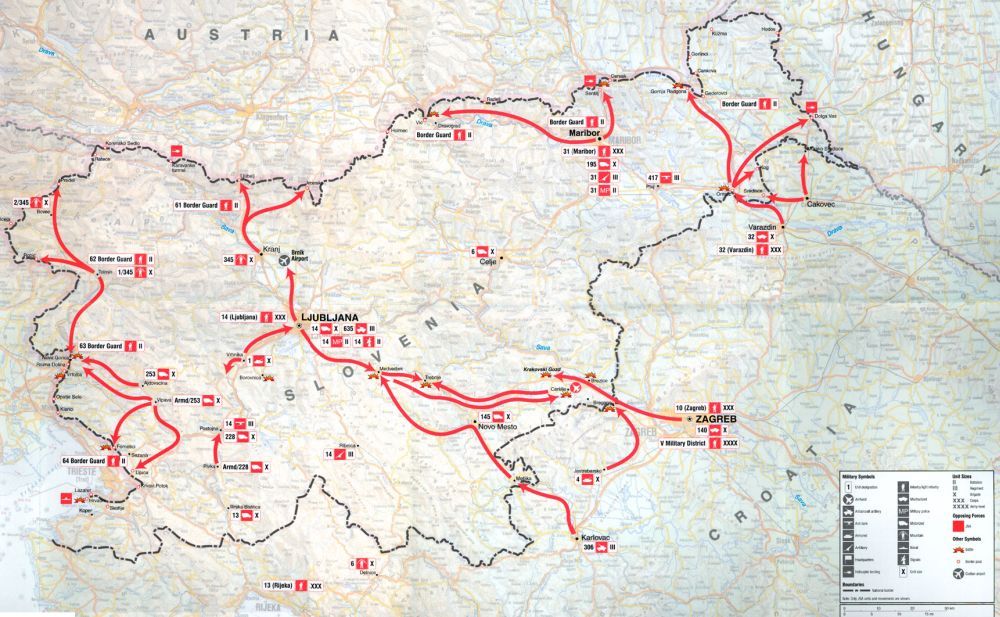
On its way to their final destinations, the Yugoslav Army encountered unarmed barricades and spontaneous, sometimes very determined reaction of the civilians.
Documentation of the events that took place at the border crossing in Gornja Radgona (the eastern border crossing with Austria):
The events that took place by Trzin, where tanks headed from Vrhnika to Brnik airport were stopped:
Rožna dolina border crossing (the border with Italy, Nova Gorica):
The ten-day war ended on 7 July, 1991, when Brioni Accords were signed. Altogether 76 people lost their lives, among them 12 foreign citizens, and 326 people were wounded. The last YPA soldiers left Slovenia on 25 of October 1991.
June 25, 2019
In 1478 marauding Turkish akinji cavalry destroyed Slovenia’s first independent peasant territory, which was established after the first Slovenian peasant revolt in Carinthia several months earlier.
The revolting peasants of Carinthia managed to gain control over their farming territories for several months earlier that year, meaning they stopped paying duties to the landowning nobility of the Holy Roman Empire and transferred some of these taxes to their peasant association instead. During the revolt, the influential Simetinger farming family was chosen as its leadership, peasants established their own courts and claimed control over the church through public election of the priests.
The so-called simetingers also gained the full support of the miners and countryside artisans. Citizens of Beljak (GER: Villach) and glassworkers of Hüettenberg helped them buy military equipment.
On June 1st the Holy Roman Imperial army began preparations to subdue the rebelling peasants, however their counterattack was overtaken by the invasion of Turkish plundering cavalry on June 25, 1478.
The northward expansion of the Ottoman Empire started with the 1371 takeover of Macedonia, continued with the defeat of the Serbian army in Kosovo Polje in 1389, then with conquering Bulgaria in 1396, and following the fall of Constantinople in 1453 Turkish troops advanced northweast, reaching the borders of the Holy Roman Empire in 1469.
The nobility and clergy locked themselves into their castles while the Turks looted and killed across Carinthia. Turkish raids were conducted by akinji, irregular and unpaid Turkish troops whose main goal was partially gathering information but mostly to demoralize the locals by pillage and destruction. Because these raids became quite common, people started to build fortresses known as tabor. A tabor was usually a church built at the top of a steep hill surrounded by a wall. Some of these simple fortresses were later transformed into castles (such as Pobrežje by Kolpa). People also organised guards on the hillsides, who lit bonfires when Turks were approaching, thereby spreading word of the danger.
However, the rebel peasant army of about 500 people didn’t stand a chance against some 20,000 akinji troops in 1478. After slaying the rebelling peasants, the Turks proceeded to loot across Upper Carinthia. After the withdrawal of the Turkish troops the authorities under the Holy Roman Empire put the remainder of the peasant rebel on trial and sentenced them to death for treason.





